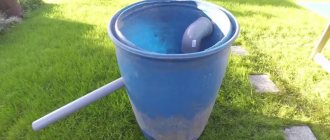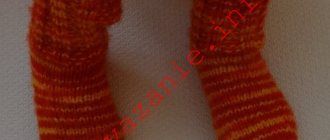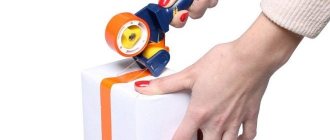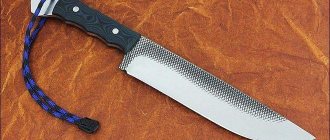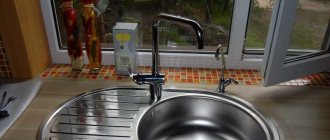Self-hook for fishing helps the angler realize more bites. You can, of course, fish using only bite alarms (light, sound, quivertips, etc.), but the percentage of empty hooks increases significantly.
Even self-tapping bottom rigs do not always work, and this leads to the loss of fish that could have ended up in the cage. That is, timely hooking is considered an important condition for success in fishing and therefore hooking becomes a mandatory element of equipment for most anglers.
Types of self-cutters for different types of gear
Any gear used, including donkeys, is equipped with devices for automatic hooking.
Most often, these devices are installed on float rods, ordinary hooks and feeders. Structurally, the devices are divided into:
- modernized - floats and hooks, which, due to minor modifications in their design, allow hooking without a fisherman;
- homemade - a device made with one’s own hands and working on the principle of a mousetrap;
- factory - technological mechanisms designed for a specific type of gear.
Depending on the chosen tackle, hookers are:
- for bottom fishing - help to perform automatic hooking when fishing with a standard bottom rod;
- for the feeder - a wide variety of devices designed for installation on gear. Special hooks can also be used, the design features of which allow, when swallowed and pulled up by a fish, to easily insert the sting into the fish’s mouth and hold it there when playing;
- for a fishing rod with a float - devices similar to feeder ones or special floats are used that have a movable washer on their antenna.
An example of a self-cutting device for a donkey
When biting is active, automatic hooking is not needed, because Most of the fisherman’s time will be spent recharging the device, thereby distracting him from the bite.
Review of the best models
- Bottom tackle called “Whip”, which uses the principle of self-cutting, is distinguished by the rather soft action of the device itself. A smooth increase in resistance is ensured by the process of turning the guard around the nail. The predator, at the moment of the bite, behaves quite warily. The smooth operation of the mechanism ensures precisely that moment when the predator has not yet realized that he is already on the hook.
- The design of a fishing inertial reel with a self-cutting mechanism. This design has increased functional data, which will certainly interest any lover of ice fishing. The bulk of such structures are homemade, the cost of which depends on various factors. You can find models that cost 100 rubles, or you can find them for a thousand rubles. It all depends on the quality of workmanship. There are craftsmen who put their soul into each product, and there are craftsmen who care more about their personal income.
To make a self-cutting fishing rod yourself, desire alone may not be enough. The fact is that this is a design that requires fairly precise tuning. If this is not done, then the fishing rod will not catch fish, which will lead to the appearance of negative emotions. I don’t know how this is done, but it will not be possible to ensure effective fishing. For everything to work out, you need to know a lot, including the behavior of the fish. It is better to have a device that can be configured to catch any type of fish. The fact is that each type of fish grabs the bait in its own way, and applies different force. If you don’t adjust the mechanism properly, you may simply not see bites, or they will be frequent and false.
Automatic undercutter video photo 004
Watch this video on YouTube
21.07.2017
Varieties
There are several options for fishing rods with automatic hooking.
- Factory ones. Such fishing rods are produced by manufacturing plants. They are neat and have a standard technological mechanism. They are described in this article, since they are a standard. Popular models: FisherGoMan, LEO Professional Fishing, “King of Fishing”.
- Homemade. Some people prefer to make automatic hook hooks for fishing rods themselves. It will not be difficult for an experienced fisherman to make such a device if he knows the principle of its operation. They are usually made for a specific type of fish.
- Improved gear. The basis of the design here is a factory model or a home-made mechanism, which is improved by replacing some components or installing others.
The automatic cutting mechanism does not differ depending on seasonality. Such fishing rods are suitable for both summer and winter fishing. The principle of their operation is the same, they differ only in appearance.
Other solutions to the problem
There are also options invented by ordinary fishermen. One of them is an automatic float cutter. It goes like this:
- The upper antenna is pulled out of the float.
- You need to put a foam ring on it. The ring size is slightly larger than the antenna.
- Now you need to return the antenna to its place. Attach a bead to the top.
- During the bite, the ring will not allow the float to sink to the bottom, and the fish will be hooked.
An automatic hooker is indispensable if your fishing goes on for a long time and you want to relax, but at the same time not lose your catch.
An example of a homemade self-cutting device for a feeder
https://www.youtube.com/watch{q}v=WHl7YPG7-FA
A very interesting design for a self-cutter for a spinning rod was invented by Sergei Fedorov. Its device has a good appearance and is well thought out from a technical point of view. By the way, this mechanism can also be used as a regular stand on the shore, without using the additional automatic hooking function.
Electronics for DIYers in
The numbers on the diagram indicate:
- Rod (spinning).
- The front bracket of the rocker arm on which the fishing rod is attached.
- Rocker body.
- Securing the axis of the rocker to the stand around which it rotates.
- Rear rocker bracket. The upper part of the spring is attached to it.
- Spring.
- Main stand of the undercutter. It needs to be made from stainless steel angle.
- Holes on the main post. They are needed to strengthen or weaken the tensile force of the spring.
- Shock-absorbing rubber. It is necessary to soften the action of the spring.
- Attaching the rubber to the bracket body.
- Bracket axis.
- Trigger. It is made of steel and must have a certain bend in the upper part to allow it to slide off the axis of the bracket when cutting (this must be selected experimentally).
- Attaching the bracket axle to the rocker body.
- Main line with accessories.
- Coil.
The mechanism is adjusted after fixing the main stand in the ground. The sensitivity of the trigger depends on the upper bend of the trigger.
For a simple and cheap design you will need the following materials and tools:
- stationery erasers 2 pcs;
- paperclip 1 pc;
- pliers.
Stages of manufacturing a self-cutter for a feeder from a paper clip.
- The elastic bands are threaded into each other, connecting together.
- One end of the elastic band is attached to the leg of the reel.
- The metal clip is straightened into a straight wire.
- Hooks are formed along the edges of the resulting wire.
- After casting the bait, one end of the device is fixed to the first ring of the tackle.
- Using a fishing line, the self-cutter is cocked, and the free end with the hook is fixed.
- After setting, you need to check the operation of the device once, then cock it back to its working position.
A more advanced type of automatic hooker is similar to the principle of operation of a mousetrap. To make it you will need:
- grinder and drill with attachments;
- metal rods with a diameter of 3 mm and 1.2 mm;
- duralumin corner 25*25 mm;
- door spring;
- bolts and nuts.
To make a self-cutting device for a feeder, you will need a steering wheel with attachments
Stages of making a homemade undercutter.
- A stand is made from a duralumin or aluminum corner to secure the device on the shore. Length approximately 7-10 cm.
- A balancer with two brackets is made from a 3 mm steel rod, the back of which is made in the form of the letter “D”, the front in the form of “C”. Both brackets should be located perpendicular to the axis of the balancer and opposite each other.
- A loop is made in the middle of the balancer to secure it to the stand. When bending the front bracket, a loop is made to attach the mechanism trigger.
- The trigger with a loop, ring and hook is made of 1.2 mm steel rod. The moving part of the mechanism is made from it. It consists of two straight cuts connected to each other. The first is connected to the front bracket along with the trigger, the second is bent a little and passed into the ring in the middle of the trigger.
- The moving elements are fixed 6-7 cm below the top of the rack when it is in the working position. A small wire hook is installed on the back.
- Using a 6 mm bolt and the same nut, the trigger is attached to the front clamp loop.
- Up to 5 holes are drilled in the rack, at a distance of approximately 25-30 cm from the top.
- The balancer is hinged to the post using an 8mm bolt and matching nut.
- The spring is secured by the hook of the handle to the holes on the stand and to the rear bracket.
After assembling the device, the process of installing the device begins.
- The balancer bends, forming a right angle between its base and the upper side of the rack.
- The connection of the moving sections of the trigger mechanism is attached to a hook on the back side of the rack.
- The free end of one moving part is passed into the trigger ring in the middle.
- The fishing rod is secured in the clamps of the balancer, and the excess fishing line is unwound.
- The line is pulled back and hooked onto the trigger hook.
- Pulling up, the fishing line lifts the trigger hook, the end of one moving part pops out of the trigger hole, releasing the rocker arm with the spring. The latter jerks upward, performing a sweep.
The mechanism is adjusted after fixing the main stand in the ground. The sensitivity of the trigger depends on the upper bend of the trigger.
Operating principle of the undercutter
An automatic winter fish hook works by triggering a basic mechanism - a tensioned steel spring or a model (depending on the type of tackle). Under the influence of the moving stop guard, which occurs during a bite, it reacts and hooks the prey.
Scheme of operation of a winter self-hooking fishing rod
The main elements of a self-hooking rod:
- handle;
- aviation elastic;
- groove under the trigger rod;
- a loop for fixing the nylon thread and itself;
- rolled steel spring;
- loop for attaching the trigger rod and monofilament thread running from the reel to the nod;
- fishing rod;
- trigger lever;
- retractable nod and base;
- monofilament;
- stand for installing a fishing rod;
- inertial reel with stopper;
- recess for the spring.
Instructions for fishing with an autohook
To understand what a feeder self-cutter is, you need to understand its structure, operating principle and types. The device is auxiliary when fishing with a feeder and does not represent a full-fledged self-hooking tackle.
Self-cutting device for feeder
A classic automatic feeder cutter - homemade or factory-made - consists of the following main elements:
- Support post - serves to fasten the self-cutting device in the soil of the bank;
- Rocker arms - designed to fix the rod handle;
- Springs - when there is a bite and the trigger mechanism is activated, under the influence of elastic force, it gives the feeder itself a jerky upward movement - a hook;
- Trigger mechanism - designed to trigger the spring-loaded rocker arm at a certain tension of the fishing line by the fish.
Such an automatic hook hook for fishing, when properly configured, virtually eliminates idle triggering and ensures the maximum number of productive hooks. In addition to fishing stores, you can purchase it on various Internet portals.
In addition to store-bought self-cutters for feeders, homemade ones have recently become widespread. They are in no way inferior to, and sometimes even superior to, their factory counterparts. There are plenty of videos and drawings on the Internet that make the process of creating a device easier.
Operating principle
The principle of operation of the self-hooking mechanism is as follows: when the fish swims up to the bait and tries to eat it, the fishing line is stretched. At a certain moment, due to its tension, the brackets securing the fishing line jump off and straighten the spring.
Important! In factory fishing rods, the response settings are set by the manufacturer, and it is almost impossible to independently adjust them to certain parameters.
It is the tension force of the fishing line that is responsible for the sensitivity of the mechanism. As a result, the working element straightens and the tackle begins to twitch. The fish is hooked. The working element can be a bracket or a fishing rod.
Purpose and technical characteristics
As you know, the most active and interesting part of fishing begins at the moment when the fish bites.
Some fish species are careful, others not so much, and begin to taste the bait. It is at this moment that you need to make an effective hook
Such hooking is quite possible if you fish with one fishing rod, and even better - if you constantly hold it in your hands.
Important! Always, on every fishing trip, you need to take into account the physiological characteristics of the type of fish you are catching. The strength and speed with which it needs to be cut depends on this
https://www.youtube.com/video/TTNyrwu1vZ8
If you are fishing with several gear, which is often the case in feeder fishing, you simply may not have enough time to react to the bite, run to the right rod and hook.
These devices, during a bite, provide the necessary jerk of the equipment in automatic mode. Quite often, experienced fishermen, based on a independently developed design, make a self-hook for a spinning rod with their own hands.
A self-hook designed for spinning also exists, although many anglers doubt its necessity, because spinning fishing assumes that the form is in the hands of the angler all the time. It is rational to use an automatic hook for spinning only when fishing by trolling or if the spinning rod is adapted for feeder gear.
An automatic fishing rod with an automatic hooker is useful for long-term fishing, when the angler cannot constantly be near it, as well as in the case when fishing is carried out with several (sometimes 4-5) rods.
Depending on their design and manufacturer, these devices are divided into the following types:
- Improved gear. This type includes floats and hooks, which, by making certain changes to their design, allow you to hook fish without the participation of a fisherman.
Various homemade designs. As a rule, a do-it-yourself automatic fish hooker and its operation scheme are based on the same principle of operation as a regular mousetrap. The main driving force in them is either dense rubber or a tensioned spring of the required power. Industrial devices. This type includes technologically advanced mechanisms that were originally designed for a particular gear.
Auto hooking is often used when fishing with more than one fishing rod, which is far from uncommon for feeder fishing. It is also advisable to get a self-hooking hook if bites are rare or you have to fish at night. When fishing, you need to take into account the breed and physiological characteristics of the fish you want to catch. The strength and speed required for hooking depends on this. The purpose of self-cutters is as follows:
- perform the hook in a timely manner and with the necessary force without the participation of the fisherman;
- provide a jerk of the equipment in automatic mode;
- perform a hook if the fisherman falls asleep while fishing at night.
Devices for automatic hooking quickly respond even to a weak bite during feeder fishing and provide the necessary line tension. This increases the chances of returning home with a rich catch, allows you to do something else in parallel with fishing, and also makes it possible to catch fish without having to be present in person.
Technically, the self-cutter looks like this:
- support stand - necessary for installing the device on the shore;
- rocker - to secure the fishing rod handle;
- spring - creates an upward jerk of the feeder (hook) when the fish swallows the hook;
- trigger (trigger) - helps to trigger the rocker when the fishing line is pulled by the fish.
As you know, the most active and interesting part of fishing begins at the moment when the fish bites.
Some fish species are careful, others not so much, and begin to taste the bait. It is at this moment that you need to make an effective hook
Such hooking is quite possible if you fish with one fishing rod, and even better - if you constantly hold it in your hands.
Important! Always, on every fishing trip, you need to take into account the physiological characteristics of the type of fish you are catching. The strength and speed with which it needs to be cut depends on this
If you are fishing with several gear, which is often the case in feeder fishing, you simply may not have enough time to react to the bite, run to the right rod and hook.
All types of feeder installations:
Paternoster (Gardner loop)
The Paternoster or Gardner Loop rig can serve as an excellent tool when fishing in any type of body of water (both on a river and in still water).
The Gardner loop is a main fishing line with bait, from which a leash with a weight feeder extends. As a rule, the main line should be of a larger diameter (0.2 - 0.3 mm), and the secondary line should not be more than 0.2 mm.
The main line is folded flush with the thin line and a knot is tied at a distance of 40 cm from the end. The stronger the knot, the better; thin fishing line should not slide along the main fishing line. The Figure Eight knot is ideal.
We cut off one end of the secondary fishing line and shorten the second to 20 cm - we get a leash onto which we knit a swivel with a clasp at a distance of 10 cm. The feeder is attached to the clasp. At the end of the main fishing line we tie a leash using the “loop to loop” method. See how to knit this knot.
In the video you can watch the entire process of manufacturing feeder equipment from Alexey Fadeev.
Symmetrical loop
An installation called “Symmetrical loop” is usually made from fluorocarbon fishing line (diameter from 0.28 - 0.31 mm).
The peculiarity of this installation is that it has a self-cutting function, which is not available in a number of alternative feeder equipment.
The manufacturing process is reflected in the video and diagram.
An important aspect is the nuance that the length of the twisted fishing line together with the loop should be longer than the total height of the hanging feeder on the anti-twist.
Installation diagram “Symmetrical loop”
Asymmetrical loop
The fishing line in this type of installation is recommended with increased sensitivity, so professionals give their preference to fluorocarbon fishing line.
First of all, it is practically invisible, and is also a very durable and poorly deformable material, which affects the sensitivity of the bite.
Installation “Asymmetrical loop” is a modification of equipment with a symmetrical loop with the only difference being that the section of the fishing line on which the swivel with the feeder is located is 2-3 cm longer.
Installation with anti-twist tube (Combine)
Installation diagram with anti-twist tube
Of course, the main feature of this equipment is its ability to prevent tangling and twisting of the fishing line.
Although this type of feeder installation does not have a self-hooking effect, an experienced angler can always achieve greater results with just such a result, because it scares the fish less - it practically does not feel resistance when biting.
Quite simple installation - check out the manufacture of this type of equipment, which can be knitted using either monofilament or braided line.
Inline
0.25-0.35 monofilament
The “Inline” installation is very similar to the asymmetrical loop equipment with only one feature: in the inline you can adjust the free stroke length of the feeder
In this case, there is also a section of twisted fishing line near the terminal loop for the leash with bait. It creates a rigid shape that prevents the leash from getting tangled with the fishing line of the rig. The length of this twisted section is approximately 15 cm, which is fixed with a regular figure eight knot.
Helicopter and two knots
Using this installation you can fish both from the bottom and in slightly higher layers of water. Fans of feeder fishing often choose this equipment for catching roach, bream and silver bream.
This feeder equipment is interesting because it is very, very sensitive to fish bite. Works well in fishing conditions with an active bite.
The manufacturing scheme is quite simple.
Tooling Method (Flat Method)
Flat is, first of all, a form of innovative feeder, which has a fairly simple method of attaching the mounting line, as well as such a feature as the ability to distribute the feed itself using tiny air bubbles, which are stored in the feeder while it is charging.
You can see how the Flat Method behaves in water.
Industrial analogue
As a rule, purchased holders with automatic hooking have a high price and are not always made of durable material. Therefore, having the necessary set of tools and a sufficient budget amount of funds, you can make such a device yourself.
The use of a simple design is the key to precise operation and minimal maintenance.
List of tools required for manufacturing:
- pliers,
- grinder with cutting wheels,
- welding machine, electrodes,
- drill,
- hammer,
- yew,
- marker or chalk,
- brush for painting work.
Materials used:
- fittings with a diameter of 8 -10 mm for the manufacture of legs,
- sheet iron 2 mm and 5 mm thick,
- door spring 50 – 80 cm long.
The procedure for making a self-hook with a rod holder:
The simplicity of the self-cutting device allows you to measure and draw a drawing based on the attached photograph.
- According to the drawing, the fittings for making the legs are measured, cut using a grinder,
- prepared rods are formed using a hammer and yews,
- brackets are cut out of sheet metal (2 mm thick) to hold the rod, spring and hooking mechanism,
The cutting process is based on the principle of the trigger propping up the tongue that holds the stand.
- holes are drilled in the spring retaining bracket,
- the undercutting tongue is made of iron 5 mm thick,
The tongue is pinned or bolted, but has free movement.
- the cut and prepared parts are welded in the required order,
- the structure is painted.
Advantages and disadvantages of self-hooking fishing rods
Today there are already some developments in the use of self-hooking fishing rods. It can be noted that such devices have certain advantages and disadvantages.
Advantages of self-hooking fishing rods:
- pronounced signs of universality. The device can be used in any open reservoir for a variety of fish species;
- if the spinning rod has expired for its special purpose, then a self-cutting device can be installed on it;
- There is no need for constant attention to the bite alarm. The most important moment for the fisherman is carried out by the fishing rod itself;
- It is quite possible to manufacture the device yourself;
- convenience associated with transportation. Compact dimensions with low weight allow you to put the fishing rod in a backpack;
- Such devices can be used even by novice fishermen with no sufficient fishing experience.
Disadvantages of self-hooking fishing rods:
- The trigger force setting is the same for all fish belonging to different categories. When adjusted in relation to medium-sized fish, it also reacts to small specimens. If the settings are too fine, the device may even react to waves or wind;
- When released by the manufacturer, factory settings are made. It will be very difficult for the fisherman himself to change them. It is simply impossible to do this on the reservoir itself;
- This fishing rod is only suitable for fish with strong lips. If, for example, the hunt takes place for bream, then it is very easy for it to tear its lips. The fish will come off the hook;
- With the use of such a fishing rod, fishing is somewhat delayed. Meanwhile, there are categories of fish that should be caught immediately after hooking. If you are late with this matter, she can take the tackle to a place where there is a large number of snags. In the case of carp, when it gets hooked, it begins active movements along the shore. At the same time, he can easily confuse all other donks.
How to catch
If a fisherman uses a fishing rod with an automatic hooker for the first time, he needs to unfold the structure and pull the end. Next, install a reel with fishing line and check its performance. Cock the trigger lever.
It is important to securely secure the device with a guard. After this, you can start fishing. Further actions are standard:
- Place bait on the hook.
- Lower the fishing line into the hole.
- Waiting for a bite.
As soon as the float begins to actively twitch, hooking occurs instantly.
Features and rules for using a self-cutter
- rod weight and length;
- the approximate distance to which the bait is planned to be cast;
- current strength and boat speed;
- characteristics of the fish, its size, weight, type of bite.
Compliance with these rules will significantly reduce the number of empty bites and increase the catch.
Auto hooks easily cope with any fish, regardless of whether it is small or a large predator. The fisherman only needs to adjust the device for a specific species and wait for the catch. Monitor the tension force of the self-cutter. Too strong will not allow the fish to remove it from the stopper, or the hook will simply tear its mouth open and it will leave. A weak tension will have the desired effect on the fish.
Example of a self-cutting device for a feeder
The operating principle of the feeder landing net is very simple:
- a fishing rod with bait is cast at the required distance to a certain place;
- the balancer is installed perpendicular to the stand and is captured by the trigger;
- the fishing rod is inserted into the clamps on the balancer, the weakened fishing line is wound back;
- the fishing line is wound behind the trigger of the mechanism;
- when biting, the fishing line pulls the lever, releasing the balancer. The latter, as a result of the tension force of the spring, jerks upward, producing a hook.
For a simple and cheap design you will need the following materials and tools:
- stationery erasers 2 pcs;
- paperclip 1 pc;
- pliers.
Stages of manufacturing a self-cutter for a feeder from a paper clip.
- The elastic bands are threaded into each other, connecting together.
- One end of the elastic band is attached to the leg of the reel.
- The metal clip is straightened into a straight wire.
- Hooks are formed along the edges of the resulting wire.
- After casting the bait, one end of the device is fixed to the first ring of the tackle.
- Using a fishing line, the self-cutter is cocked, and the free end with the hook is fixed.
- After setting, you need to check the operation of the device once, then cock it back to its working position.
A more advanced type of automatic hooker is similar to the principle of operation of a mousetrap. To make it you will need:
- grinder and drill with attachments;
- metal rods with a diameter of 3 mm and 1.2 mm;
- duralumin corner 25*25 mm;
- door spring;
- bolts and nuts.
To make a self-cutting device for a feeder, you will need a steering wheel with attachments
Stages of making a homemade undercutter.
- A stand is made from a duralumin or aluminum corner to secure the device on the shore. Length approximately 7-10 cm.
- A balancer with two brackets is made from a 3 mm steel rod, the back of which is made in the form of the letter “D”, the front in the form of “C”. Both brackets should be located perpendicular to the axis of the balancer and opposite each other.
- A loop is made in the middle of the balancer to secure it to the stand. When bending the front bracket, a loop is made to attach the mechanism trigger.
- The trigger with a loop, ring and hook is made of 1.2 mm steel rod. The moving part of the mechanism is made from it. It consists of two straight cuts connected to each other. The first is connected to the front bracket along with the trigger, the second is bent a little and passed into the ring in the middle of the trigger.
- The moving elements are fixed 6-7 cm below the top of the rack when it is in the working position. A small wire hook is installed on the back.
- Using a 6 mm bolt and the same nut, the trigger is attached to the front clamp loop.
- Up to 5 holes are drilled in the rack, at a distance of approximately 25-30 cm from the top.
- The balancer is hinged to the post using an 8mm bolt and matching nut.
- The spring is secured by the hook of the handle to the holes on the stand and to the rear bracket.
After assembling the device, the process of installing the device begins.
- The balancer bends, forming a right angle between its base and the upper side of the rack.
- The connection of the moving sections of the trigger mechanism is attached to a hook on the back side of the rack.
- The free end of one moving part is passed into the trigger ring in the middle.
- The fishing rod is secured in the clamps of the balancer, and the excess fishing line is unwound.
- The line is pulled back and hooked onto the trigger hook.
- Pulling up, the fishing line lifts the trigger hook, the end of one moving part pops out of the trigger hole, releasing the rocker arm with the spring. The latter jerks upward, performing a sweep.
If you do everything right, you will have a great fishing device. With a self-cutting feeder, you don’t have to worry that your fishing labor will go unrewarded.
Step by step guide
Considering the simplicity of the procedure, many beginners are interested in making a hook hook for a bottom fishing rod with their own hands. Drawings, diagrams and step-by-step instructions, which are widely distributed on the Internet, greatly simplify the task at hand, allowing you to create incredibly useful accessories.
In most cases, automatic bite hooks are made for summer gear, since models for winter fishing are slightly different in design. After determining the type and nature of the fish, you can begin drawing up drawings, and then work on manufacturing. The algorithm is as follows:
As a basis for the future structure, you can take a wooden sheet with a thickness of 10 millimeters, in the base of which you need to drill several holes through which the pins will be fed, fixing the platform to the shore. The most promising form of undercutter is a slingshot without sharp corners and edges. A steel wire spring with a diameter of up to 1 millimeter must be wound onto the formed lever.
This must be done manually, taking pliers in one hand to clamp the spring wire with a lever, and in the other, a coil for winding. This part of the mechanism will exert a sharp tension on the fishing line, so at this stage it is important to correctly calculate the elasticity of the spring, adding turns gradually, without reducing the size of the spring. The spring power is selected taking into account the weight of the load at the end of the tackle
It remains to leave a segment half the length of the lever, and on the other side - 5-7 centimeters to prevent rotation.
The same steel wire 3-4 millimeters thick is used as the manufacturing material for this element.
If you want to use thinner wire, it is important to make sure that it has optimal rigidity. The bending profile can be seen in the photograph
Typically, the line is passed through a rubber or silicone tip. According to reviews of folk craftsmen, excellent results at this stage are demonstrated by an ordinary eraser, which is divided into equal parts. To make sure that the accessory does not fall off during intensive use, it can be reinforced with bright electrical tape.
The bracket is fixed to the base using staples made of nails without heads.
When choosing the shape of the future undercutter, you can give free rein to your imagination. Many fishermen make it in the form of an inverted letter “P”. Two holes are made in the base for fastening, and in the side there are two holes for mounting the lever. The spring is fixed in two ways, but in most cases the console is used.
All that remains is to screw a small hook or ring into the base, and then insert the fishing line there. You should also make sure that the mechanism is configured correctly and works without failures.
We must not forget about the natural wear and tear of the spring, as a result of which it loses its former elasticity and needs increased power. To do this, you need to provide a decent supply of wire.
The disadvantages of the device include the need to constantly release the fishing line from the ring, as well as the use of weights weighing at least 40 grams.
Float based
How to make a nod for a winter fishing rod
People's ingenuity and ingenuity showed themselves in fishing with float tackle. It happens when the bite is activated, and it is physically impossible to catch with two or three fishing rods. The bite occurs, but the fisherman does not have time to hook. For such situations, a self-cutter based on a float was invented. The manufacturing principle is simple:
- a flat foam rubber cylinder is cut out, the size of which is determined experimentally by the diameter of the float;
- the selected piece of foam rubber is placed on the top with free movement along it and fixed with a bead with a cambric.
When bitten, the modified design goes under water. In this case, the cylinder creates significant resistance to immersion, and self-cutting occurs.
The sensitivity of the trigger can be easily adjusted by moving the foam rubber along the alarm antenna.
Attention! When fishing for crucian carp, this modification does not work. The main feature of its bites is the raising of the float, and not sudden drowning, like other fish
